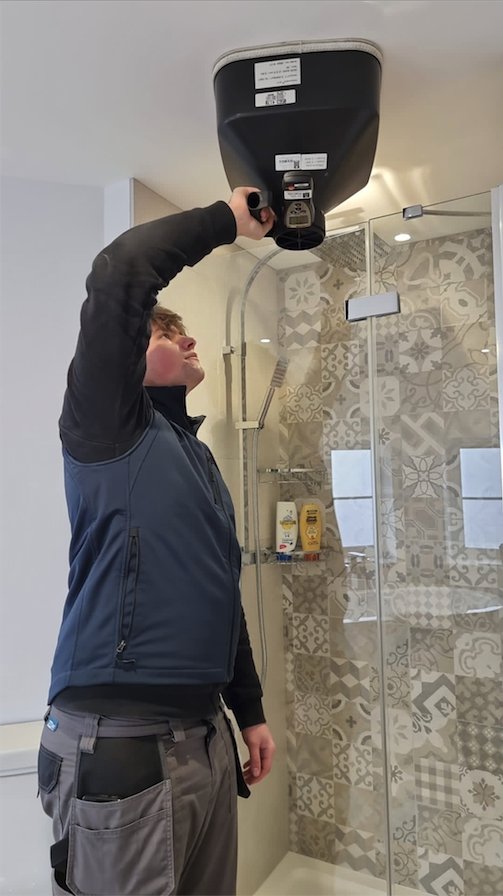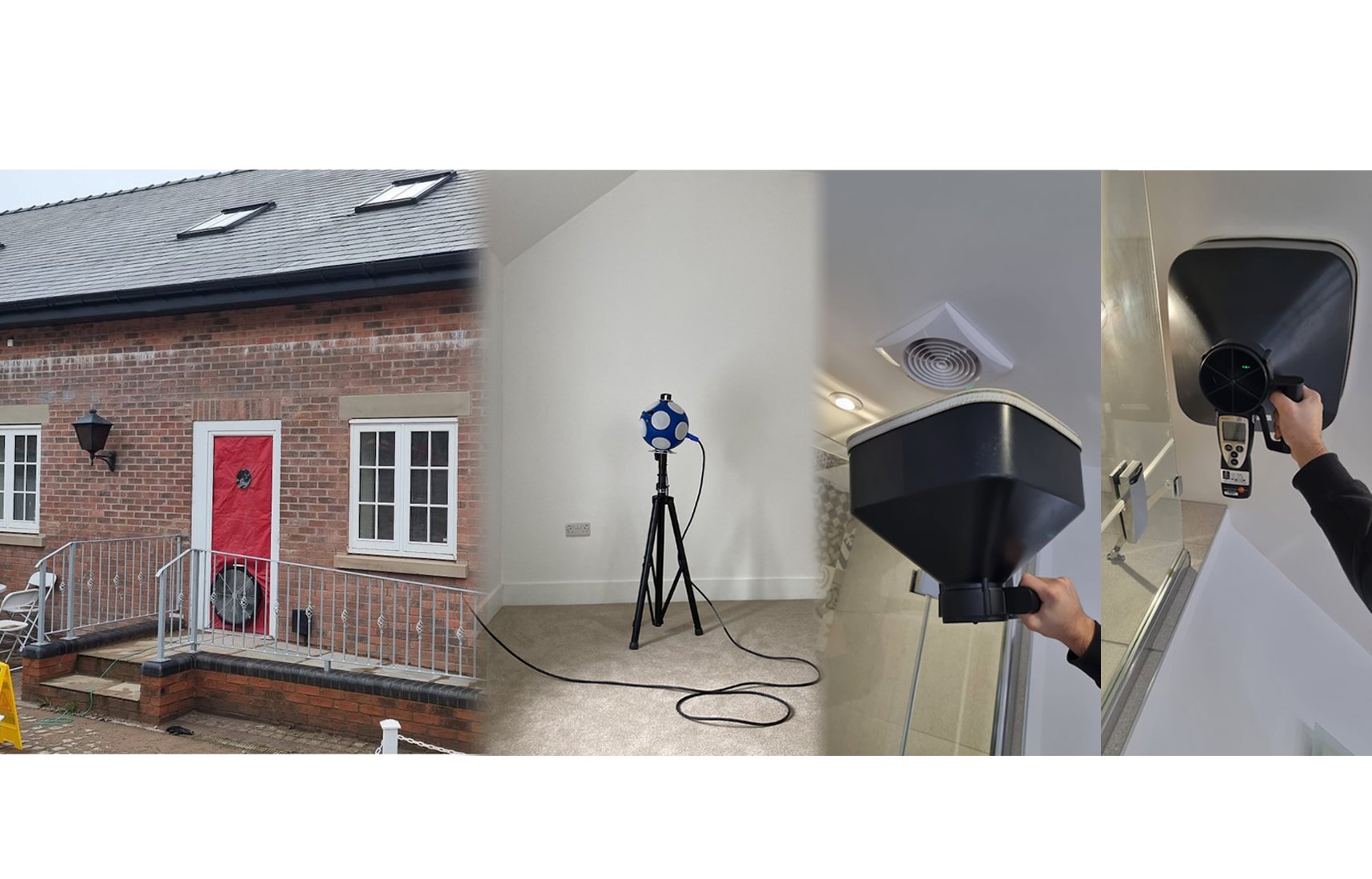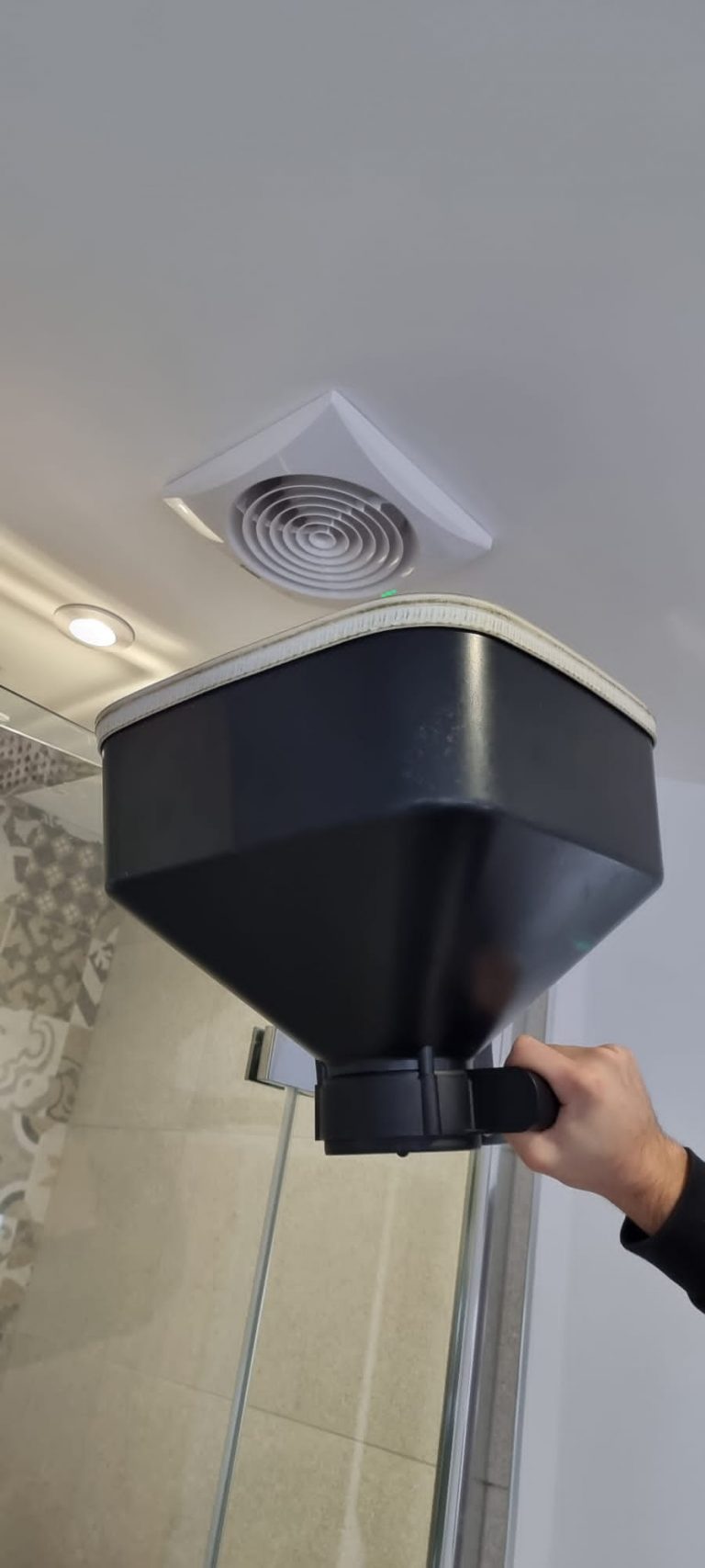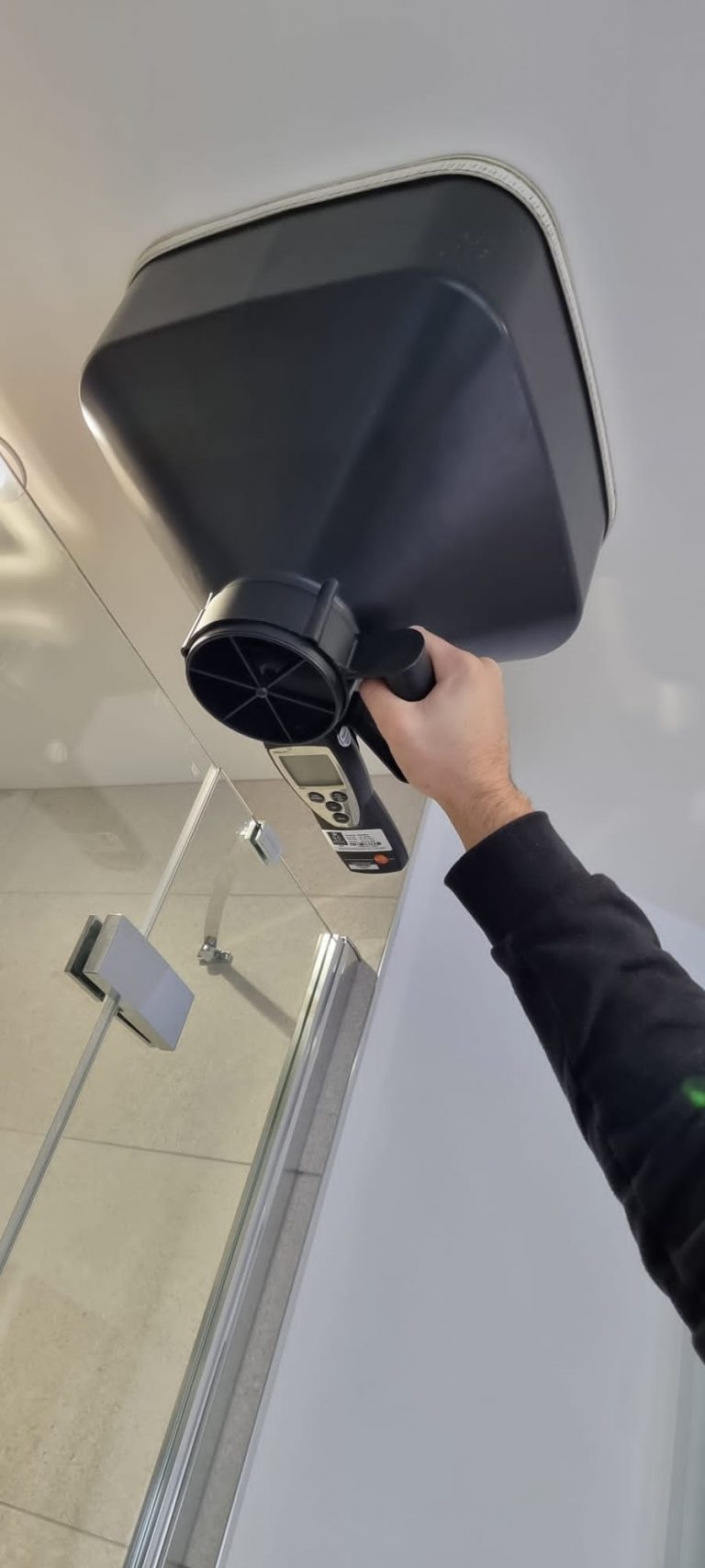Ventilation testing is required for all new builds to ensure compliance with Building Regulations Part F, which sets out the minimum requirements for ventilation in buildings. The purpose of this regulation is to ensure that buildings have adequate ventilation to maintain a healthy and comfortable indoor environment for occupants.
Ready for your vent test?
Call us on 01743 540260 to book one of our qualified local engineers today, or email info@brnt-uk.com. We can usually organise a test within 5 working days, sometimes sooner.Ventilation testing is carried out to determine the flow rate of mechanical extract ventilation (MEV) systems, which are designed to remove stale air and moisture from a building. The testing involves measuring the flow rate of air from the extract fans in each room using specialist equipment. The results of the testing are compared against the design specifications to ensure that the ventilation system is working correctly and providing the required air flow rate.
Inspection Reports
The results of the testing are recorded in a report, which will include details of any defects or issues identified during the inspection. If the ventilation system does not meet the required flow rate, remedial work will need to be carried out to ensure compliance with Building Regulations Part F.


Qualified Engineers
The testing is typically carried out by a qualified engineer and involves a visual inspection of the ventilation system to identify any potential issues that could affect its performance. The engineer will then carry out measurements using calibrated equipment to determine the flow rate of air from each extract fan.
Building compliance
Overall, ventilation testing is an important aspect of building compliance, as it ensures that buildings have adequate ventilation to maintain a healthy and comfortable indoor environment. If you are constructing a new building, it is important to ensure that you comply with Building Regulations Part F and arrange for ventilation testing to be carried out by a qualified engineer.
Service Benefits
- Why do I need a ventilation test?
-
As buildings have become more airtight (aimed to make them more efficient to heat and run), air flows and drafts have decreased. When moisture is added to the interior environment, through taps, showers, and baths etc, this can lead to damp and mould as the humid air cannot escape. Mechanical extract fans are required to purge the air and remove this moist air. A ventilation test is required to check the flow rates for these purge fans.
- What is a fan flow rate test?
-
Building regs require that the fans work properly to remove this air, specifying an extract rate for different rooms. The flow rate of any individual outlet point is impacted by both the power of the fan and the ducting length and route to the outlet. A ventilation test will monitor the extract rate for the whole system together to give a result.
- What are Part F extract rates?
-
- Kitchen 30 l/s
- Utility 30 l/s
- Bathroom 15 l/s
- WC 6 l/s
- How do we test for ventilation rates?
-
Our BPEC accredited engineers use our Vane Anemometers to test the flow rate of any fan. These UKAS calibrated vent meters have a cowl that fits over the vent with an electronic meter attached that measures the extract rate.
- When do I need to get my extract fans tested?
-
The building needs to be weathertight, and all vents and extractors need to be fully installed and powered up in order for us to complete the ventilation test. It can be most efficient to get this done at the same time as your air tightness test towards the end of the works, BRNT offers a discounted rate for combined testing.
- How do I pass my mechanical extract test?
-
You can download our pre-test checklist for a full guide here, but below are a few helpful pointers:
- Buy high extract fans (at least 30 l/s)
- Use larger diameter ducting (125 or 150mm) to meet the Kitchen and Utility requirements
- Keep duct runs as short as possible
- Use rigid ducting if viable
- Where flexible ducting is used, make sure there is no excess ducting
- Minimise bends and restrictions






